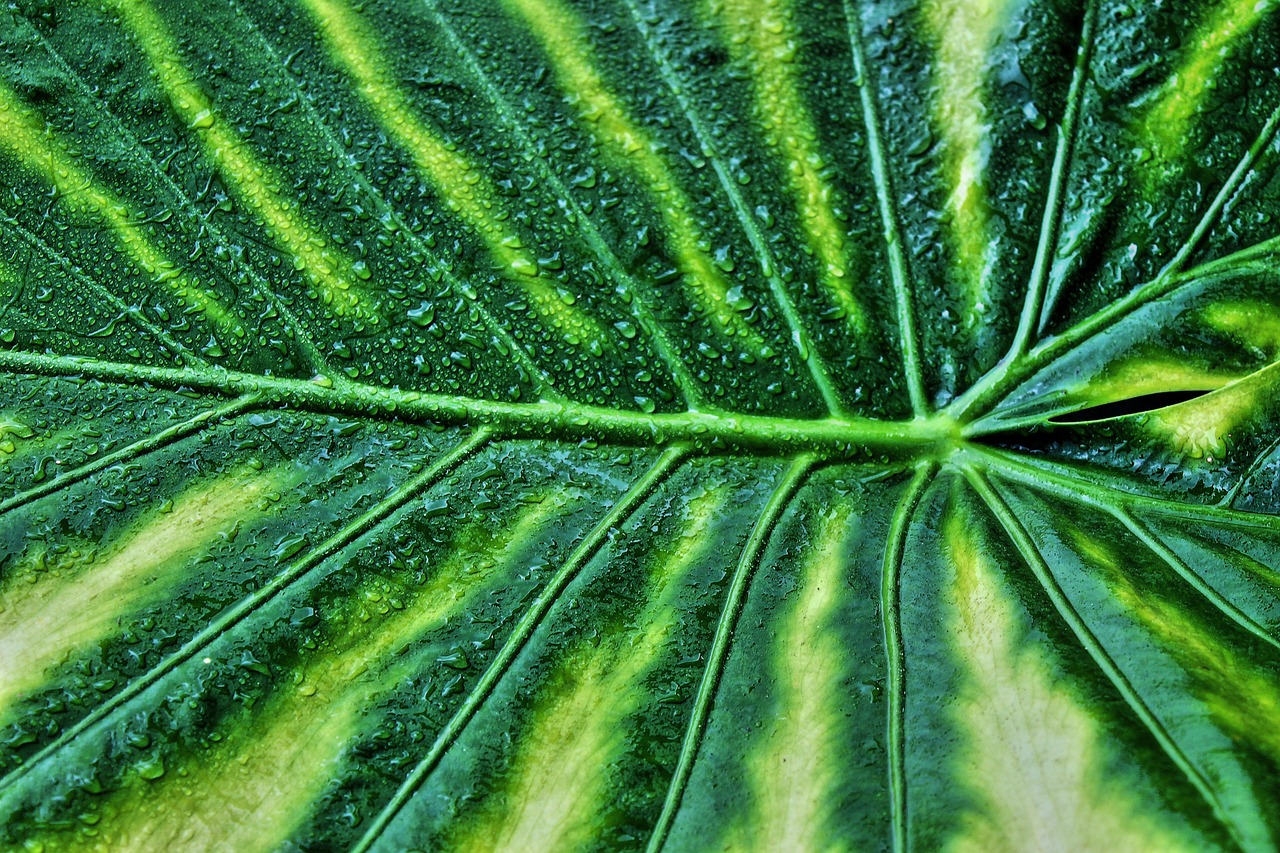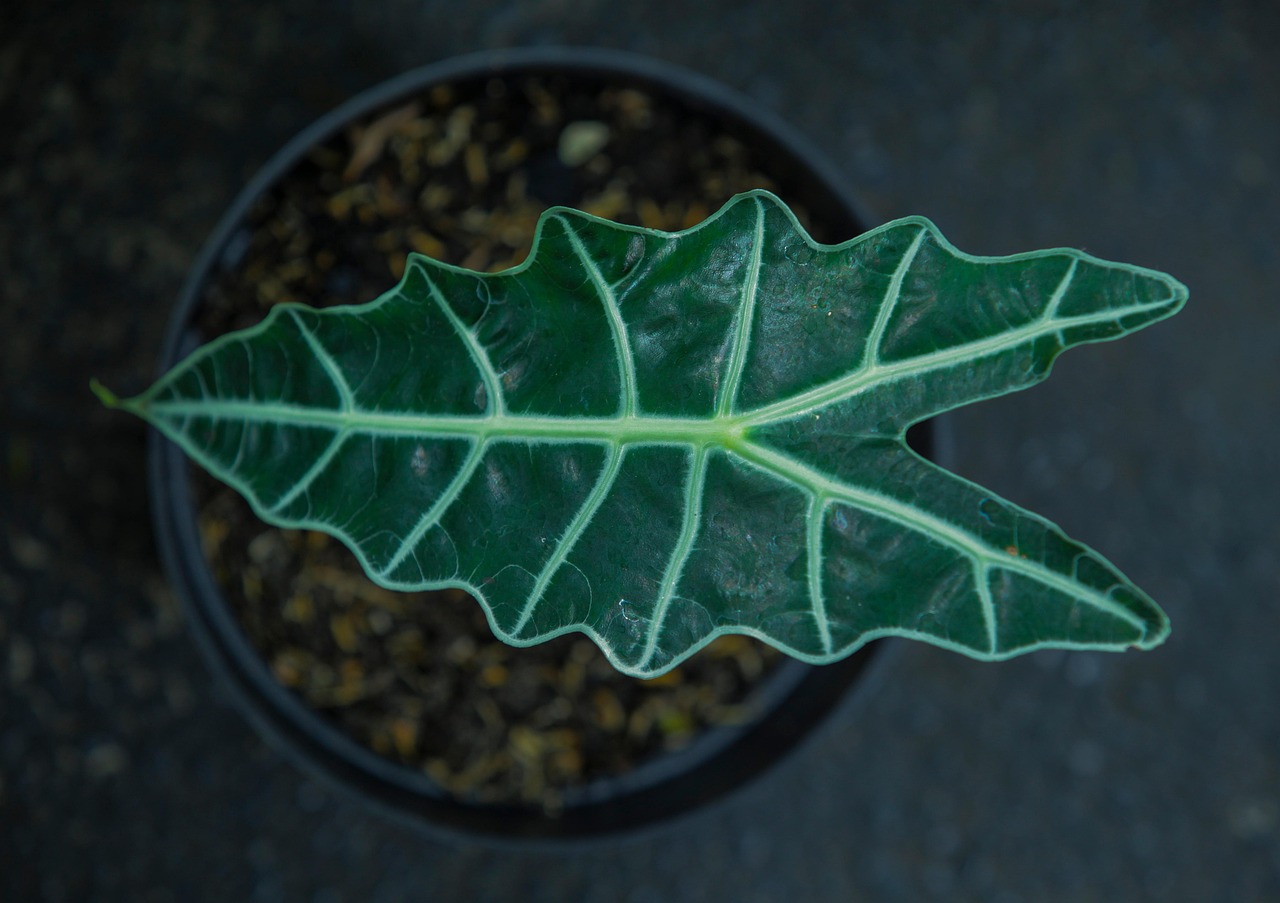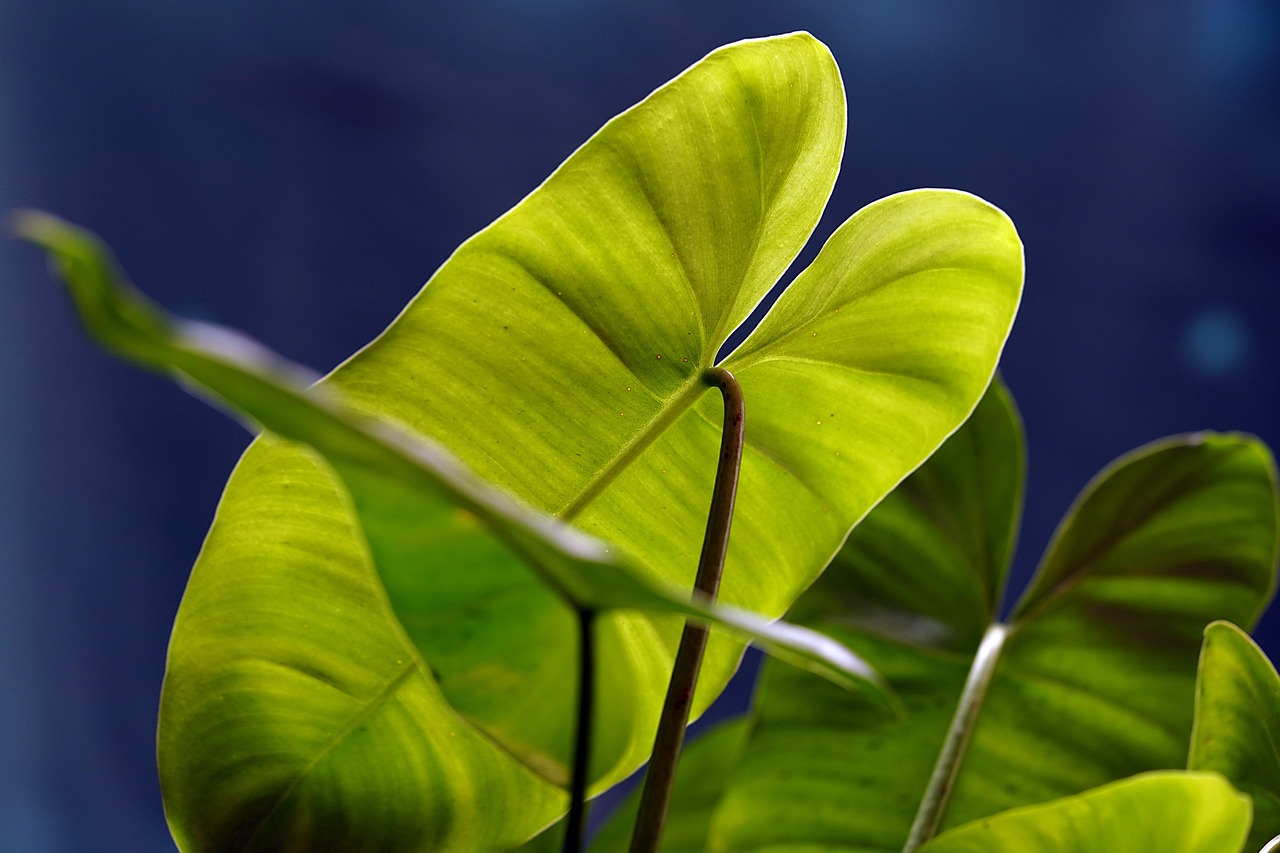The Azlanii Alocasia, known for its striking red foliage, requires specific care to thrive. Optimal conditions include bright, indirect light, high humidity, and well-draining soil. Regular watering and fertilization help maintain its vibrant color and overall health.
The Azlanii Alocasia is a stunning tropical plant that has gained popularity among houseplant enthusiasts. Its unique leaves, which feature deep red undersides and glossy green tops, create a dramatic look in any indoor space. This plant not only adds aesthetic value but also purifies the air, making it a beneficial addition to homes and offices.
Originally native to the tropical regions of Southeast Asia, the Azlanii Alocasia thrives in environments that mimic its natural habitat. Understanding its specific needs is crucial for successful growth. This section will cover important aspects of care, including light requirements, watering techniques, humidity levels, and soil preferences.
Light Requirements

Providing the right amount of light is essential for the Azlanii Alocasia’s growth. Here are some key points regarding its lighting needs:
- Bright Indirect Light: The Azlanii Alocasia prefers bright but indirect sunlight. Direct sunlight can scorch its leaves and diminish its vibrant color.
- Filtered Light: Placing the plant near a window with sheer curtains can provide the necessary filtered light it craves.
- Low Light Conditions: While it can tolerate low light, this may hinder growth and reduce the vibrancy of the leaves.
Watering Techniques
Watering is another critical factor in caring for the Azlanii Alocasia. Proper watering ensures that the roots remain healthy while preventing overwatering, which can lead to root rot.
Here are some guidelines to follow:
- Check Soil Moisture: Before watering, check the top inch of soil. If it feels dry, it’s time to water.
- Water Thoroughly: When watering, ensure that water drains out of the bottom of the pot. This encourages healthy root growth.
- Adjust Seasonally: During the growing season (spring and summer), the plant may require more frequent watering compared to the dormant winter months.
Humidity Levels
The Azlanii Alocasia thrives in high humidity environments. Here are some tips to maintain adequate humidity for your plant:
- Ideal Humidity: Aim for humidity levels between 60% to 80% for optimal growth.
- Use a Humidifier: A humidifier in the room can help maintain consistent humidity levels.
- Misting: Lightly misting the leaves can also aid in increasing humidity, especially during dry seasons.
Soil Preferences
The right soil mix is crucial for the Azlanii Alocasia’s health. A well-draining soil will provide the necessary nutrients while preventing water retention. Consider the following when choosing soil:
| Soil Type | Description |
|---|---|
| Aroid Mix | A blend of potting soil, perlite, and orchid bark that promotes drainage. |
| Cactus Mix | Provides excellent drainage, suitable for preventing overwatering issues. |
Selecting the right soil mix will significantly contribute to the overall health of your Azlanii Alocasia. With proper care in terms of light, water, humidity, and soil, this vibrant plant will thrive and bring beauty to your space.
Fertilization Tips for Azlanii Alocasia
Fertilizing the Azlanii Alocasia is essential for promoting healthy growth and vibrant foliage. Nutrients support the plant’s ability to thrive, especially during its active growing season. Here are some important guidelines for effective fertilization:
- Type of Fertilizer: Use a balanced, water-soluble fertilizer with an N-P-K ratio of 20-20-20 or similar. This ensures that the plant receives equal parts of nitrogen, phosphorus, and potassium.
- Frequency: Fertilize every 4 to 6 weeks during the growing season, which typically spans from spring to early fall. Reduce or stop fertilization in the winter months when growth slows down.
- Dilution: Always dilute the fertilizer according to package instructions. Over-fertilizing can lead to root burn and damage the plant.
- Application Method: Apply the fertilizer directly to moist soil. This helps prevent root damage and ensures better nutrient absorption.
Pest Management
Like many houseplants, the Azlanii Alocasia can be susceptible to pests. It is crucial to monitor your plant regularly for any signs of infestations. Common pests include spider mites, aphids, and mealybugs. Here’s how to manage pests effectively:
Signs of Infestation
Be vigilant for these indicators that your plant may have pests:
- Yellowing leaves or leaf drop
- Sticky residue on leaves (honeydew)
- Webbing between leaves or on stems
- Visible bugs on the plant
Pest Control Methods
If you notice any of these signs, consider the following pest control methods:
- Manual Removal: For small infestations, simply wipe the leaves with a damp cloth to remove pests.
- Insecticidal Soap: Use an insecticidal soap spray as a safe option for treating pests. Follow the instructions carefully for application.
- Natural Remedies: Mixtures of water and dish soap can effectively deter pests. Spray on affected areas, but test a small leaf first to ensure no damage occurs.
Repotting Your Azlanii Alocasia
Repotting is an important aspect of care for the Azlanii Alocasia, especially as it grows. Repotting allows for fresh soil and more space for root development.
When to Repot
Consider repotting your plant under these conditions:
- Root Bound: If roots are growing out of the drainage holes or tightly coiled in the pot, it’s time to repot.
- Soil Degradation: If the soil appears compacted or depleted of nutrients, a change is necessary.
- Every 1-2 Years: As a general rule, repot every one to two years to refresh the soil and provide room for growth.
Repotting Steps
Follow these steps to successfully repot your Azlanii Alocasia:
- Select a New Pot: Choose a pot that is one size larger than the current one with drainage holes to prevent waterlogging.
- Prepare Fresh Soil: Use a well-draining potting mix suitable for aroids or houseplants.
- Remove the Plant: Carefully take the plant out of its current pot, gently loosening any tightly bound roots.
- Place in New Pot: Position the plant in the new pot and fill around it with fresh soil. Ensure it is at the same depth as before.
- Water Thoroughly: After repotting, water the plant well to help settle the soil and reduce transplant shock.
Propagation Techniques
If you want to expand your collection or share the beauty of your Azlanii Alocasia, propagation is an excellent option. There are several methods to propagate this plant:
Division Method
The most common way to propagate Azlanii Alocasia is through division. Here’s how:
- Select a Mature Plant: Choose a healthy plant with multiple stems.
- Remove from Pot: Gently take the plant out of its pot.
- Divide Roots: Carefully separate the root ball into sections, ensuring each division has at least one stem and root system.
- Replant Sections: Plant each section in its own pot with fresh soil, following the same care guidelines as mature plants.
Leaf Cuttings
You can also propagate using leaf cuttings, although this method may take longer:
- Select a Healthy Leaf: Choose a large, healthy leaf and cut it into sections with a vein in each piece.
- Plant Cuttings: Place each cutting in moist potting soil, burying the vein slightly.
- Create a Humid Environment: Cover the cuttings with a plastic bag or place them in a humidity dome until roots develop.
The Azlanii Alocasia can thrive under proper care and attention. Understanding key aspects such as fertilization, pest management, repotting, and propagation will enhance your experience with this vibrant plant.
Co

mmon Problems and Solutions
Caring for the Azlanii Alocasia can sometimes present challenges. Being aware of common problems and their solutions can help maintain the health of your plant. Here are some typical issues you may encounter:
Leaf Yellowing
Yellowing leaves can be a sign of various issues. Here are some possible causes and solutions:
- Overwatering: Excess water can lead to root rot. Allow the soil to dry out before watering again and ensure the pot has proper drainage.
- Underwatering: Conversely, if the plant is too dry, it may also exhibit yellow leaves. Check soil moisture regularly and water when needed.
- Light Issues: Insufficient light can cause leaves to yellow. Ensure the plant receives adequate bright, indirect light.
Brown Tips on Leaves
If the tips of the leaves are turning brown, this often indicates a problem with humidity or watering:
- Low Humidity: The Azlanii Alocasia prefers high humidity levels. Consider using a humidifier or misting the leaves regularly.
- Underwatering: Brown tips may also result from insufficient water. Monitor your watering routine and adjust as necessary.
Wilting Leaves
Wilting can be alarming, but it is often fixable with prompt action:
- Watering Issues: Both overwatering and underwatering can cause wilting. Check the soil moisture to determine the cause and adjust your watering accordingly.
- Pest Infestation: Pests can stress the plant, causing wilting. Inspect your plant for pests and treat as necessary.
Seasonal Care Adjustments
The care requirements for your Azlanii Alocasia can vary by season. Adjusting your care routine according to the time of year will help your plant thrive.
Spring and Summer Care
During the growing season, your Azlanii Alocasia will be more active and will require additional care:
- Increase Watering: As temperatures rise, the plant will need more frequent watering. Keep an eye on soil moisture.
- Fertilization: Apply fertilizer every 4 to 6 weeks to support growth during this active period.
- Humidity Levels: Maintain high humidity, which is crucial for growth during warmer months.
Fall and Winter Care
<pAs temperatures drop, the plant's growth will slow down. Here are some adjustments to make:
- Reduce Watering: Allow the top layer of soil to dry out more between waterings, as the plant’s water needs will decrease.
- Avoid Fertilization: With reduced growth, refrain from fertilizing during the fall and winter months.
- Maintain Humidity: Continue to monitor humidity levels, as indoor heating can dry out the air significantly.
Choosing the Right Location
The placement of your Azlanii Alocasia is vital for its health. Consider these factors when choosing the right location for your plant:
- Avoid Drafts: Keep the plant away from doors or windows where cold drafts may occur, especially in winter.
- Temperature Stability: The Azlanii Alocasia prefers temperatures between 65°F to 80°F (18°C to 27°C). Ensure that temperatures remain stable in its environment.
- Adequate Light: Position the plant in a spot that receives bright, indirect sunlight without harsh direct rays that could scorch its leaves.
Cleaning and Maintenance
Regular

cleaning and maintenance are essential for keeping your Azlanii Alocasia healthy and looking its best. Here are some tips for effective maintenance:
Dusting Leaves
Dirt and dust can accumulate on leaves, hindering their ability to photosynthesize effectively. To clean your plant:
- Misting: Lightly mist the leaves with water occasionally to help remove dust.
- Damp Cloth: Use a soft, damp cloth to gently wipe down each leaf, ensuring you reach both sides where possible.
Monitoring Growth
Keep an eye on your plant’s growth pattern. If it appears to be growing slowly or not at all, reassess its care routine and environmental conditions.
The Azlanii Alocasia is a beautiful addition to any indoor space when properly cared for. By addressing common issues, adjusting care with the seasons, choosing an optimal location, and maintaining cleanliness, you’ll create an environment where this vibrant plant can flourish.
Additional Care Tips
In addition to the core care guidelines previously discussed, there are several other factors that can enhance the overall health and vitality of your Azlanii Alocasia. Here are some additional tips to consider:
Seasonal Changes and Adaptation
As seasons change, so do the needs of your plant. Being aware of these shifts can help you provide optimal care:
- Spring Awakening: As the days lengthen and temperatures rise in spring, increase watering and consider introducing a diluted fertilizer to stimulate new growth.
- Summer Heat: Monitor your plant for signs of heat stress during the hot summer months. You may need to increase humidity levels or move the plant to a slightly cooler location.
- Fall Transition: As temperatures begin to cool, reduce watering frequency and stop fertilization. Prepare your plant for its winter dormancy.
- Winter Care: Ensure your plant is not exposed to cold drafts or extreme temperature changes. Maintain humidity levels to prevent leaf drop.
Understanding Plant Behavior
Each Azlanii Alocasia will have its unique growth patterns and behaviors. Observing these can help you tailor care to meet its specific needs:
- Leaf Growth: New leaves typically emerge from the center of the plant. If this process slows down, it may indicate environmental stress.
- Color Changes: Pay attention to any changes in leaf color. Fading or dull colors may suggest inadequate lighting or nutrient deficiency.
- Leaf Loss: If the plant begins to drop leaves, consider checking for pests, watering issues, or changes in humidity.
Pest Prevention Strategies
Preventing

pest infestations is often easier than treating them after they occur. Implementing proactive measures can save you time and effort:
- Regular Inspections: Frequently check your plant for signs of pests. Early detection is key to managing infestations effectively.
- Quarantine New Plants: If you acquire new plants, keep them separate from your existing collection for a few weeks to ensure they are pest-free.
- Use Neem Oil: A natural pesticide, neem oil can help deter pests when sprayed regularly on your plant.
Final Thoughts
The Azlanii Alocasia is a remarkable houseplant that can bring vibrant energy and beauty to any space. With its striking foliage and unique appearance, it is no wonder that it has become a favorite among plant enthusiasts. By understanding and addressing its specific care requirements, you can ensure that your Azlanii Alocasia thrives in your home.
Key takeaways for success with your Azlanii Alocasia include:
- Provide bright, indirect light to promote healthy growth.
- Maintain high humidity levels and a consistent watering schedule.
- Regularly monitor for pests and adjust care based on seasonal changes.
- Repot as necessary and consider propagation to expand your collection.
Investing time and effort into understanding the needs of your Azlanii Alocasia will yield beautiful results. As you nurture this vibrant plant, you will likely find joy in its growth and aesthetic appeal. By following these guidelines and adapting care based on individual plant behavior, your Azlanii Alocasia can flourish, enhancing the beauty of your indoor environment for years to come.
